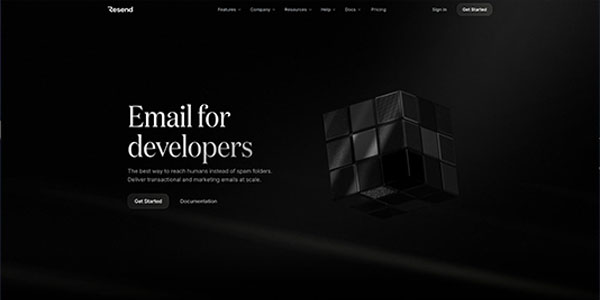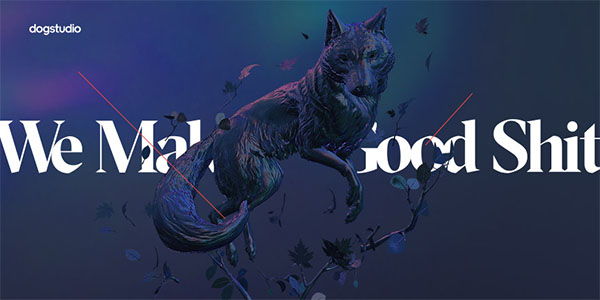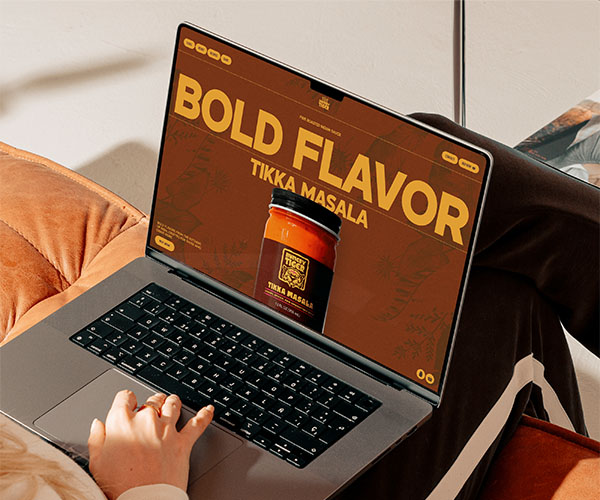In today's highly competitive digital world, it is essential for websites to capture users attention and to create a lasting impression. Gone are the days of flat and simplistic websites. These days users prefer richer and more immersive experiences. This has led designers to experiment with 3D to add excitement to websites and differentiate themselves from others.
But, what is 3D web design and why should websites be using it?
What is 3D website design?
In simple terms, 3D web design refers to any three-dimensional element or feature that creates the illusion of depth and realism in websites, which would otherwise appear flat.
Examples of 3D web design

Resend
Resend is an email API service that is built for engineers by engineers. It has a sleek and minimalist website featuring a video hero conveying a 3D effect. This not only captures the users attention but also encourages them to continue exploring.

Dog Studio
Dog Studio is a multidisciplinary creative studio dedicated to delivering amazing online experiences. They use 3D throughout their website as a way of showcasing their talent and creativity to potential clients.

Hungry Tiger
Hungry Tiger is a sauce brand inspired by Indian cuisine, which uses 3D elements in a lively and dynamic manner, akin to the brand's bold flavors. As the user scrolls the web page, the jar rotates in a playful manner.
The rise of 3D web design
Historically, web design relied heavily on 2D elements such as icons, images and text to form the core of interfaces. However, advancements in technology, including HTML5, CSS3 and WebGL, coupled with faster internet speeds have made it possible to develop more experiences. With the help of 3D modelling software like Spline and Blender, designers are able to create 3D assets with ease.
Blender
A free, open-source 3D graphics software used for creating 3D printed models and interactive 3D applications
Spline
A web based, collaborative tool used to create and publish 3D models and animations
Benefits of 3D web design
01.More memorable
With many websites still considered as being flat, using 3D in your website is a great way of making it stand out from the crowd. It captivates users and keep them engaged longer.
02.Improved SEO
3D elements have the power to captivate users, keep them engaged and encourage them to explore further. This can improve a websites user engagement and dwell time; the amount of time users spend on a website. Both are crucial factors for search engine ranking and user experience.
03.Better storytelling
For eCommerce websites in particular, 3D has been transformative. By visualising products in 3D, users can engage with products by rotating them and even zooming in to see their fine details. This improved storytelling not only boosts consumer confidence, resulting in higher conversions but also fosters greater brand loyalty.
Challenges
While the benefits of 3D web design are clear, there are also challenges you may want to consider before incorporating it your website. Firstly, the biggest challenge is to ensure the addition of 3D elements do not hinder the websites overall performance. It is essential these elements are optimised for speed and usability, otherwise they could negatively impact loading times and SEO rankings.
Getting the right balance between functionality and aesthetics can be difficult
Another challenge is guaranteeing compatibility across browsers and devices, as performance inconsistencies may arise. Implementing 3D should never compromise usability. Therefore, thorough testing is required to ensure a every user has a seamless experience.
Finally, creating high-quality 3D elements can be expensive, particularly for small businesses. Investing in 3D software like Blender and Spline, along with hiring skilled designers may not be feasible as not every designer is proficient in 3D modeling.
Key takeaway
3D web design is great at capturing users attention and keeping them engaged longer. It is a powerful tool that enhances visual storytelling by enabling users to interact with and immerse themselves in ways that 2D cannot. It not only adds depth and realism to websites but is also particularly effective for those websites wishing to leave a lasting impression or wanting to separate themselves from others.
However, it is worth noting that there are some factors to consider before implementing 3D in a website. Firstly, however aesthetically pleasing it is, 3D should never compromise a websites usability nor speed. By adding more complexity, you can negatively impact its loading time, which can frustrate users and forcing them to abandon the site altogether.
Secondly, 3D design can prove to be costly to produce and challenging to implement. Specialist designers are required to produce the assets and thorough testing required to ensure a seamless experience is achieved across various browsers and devices.